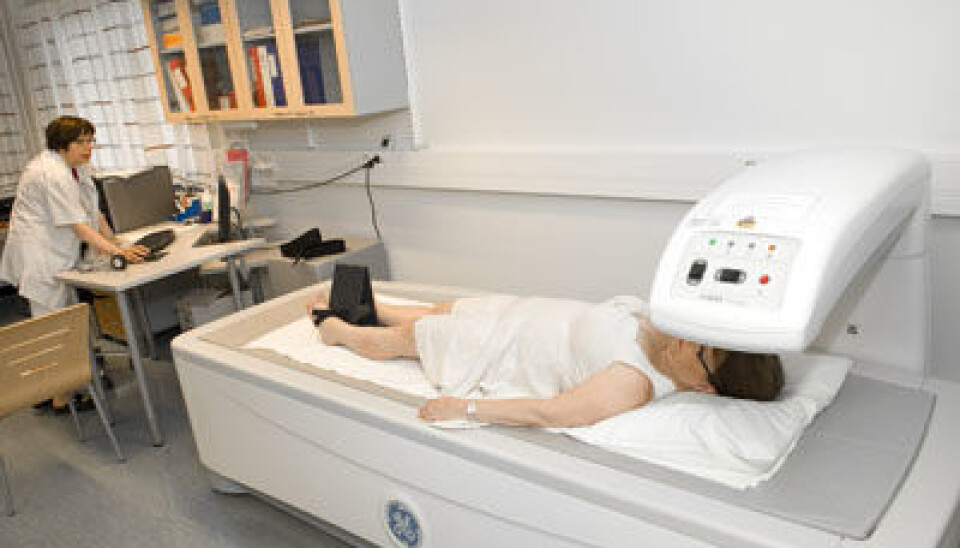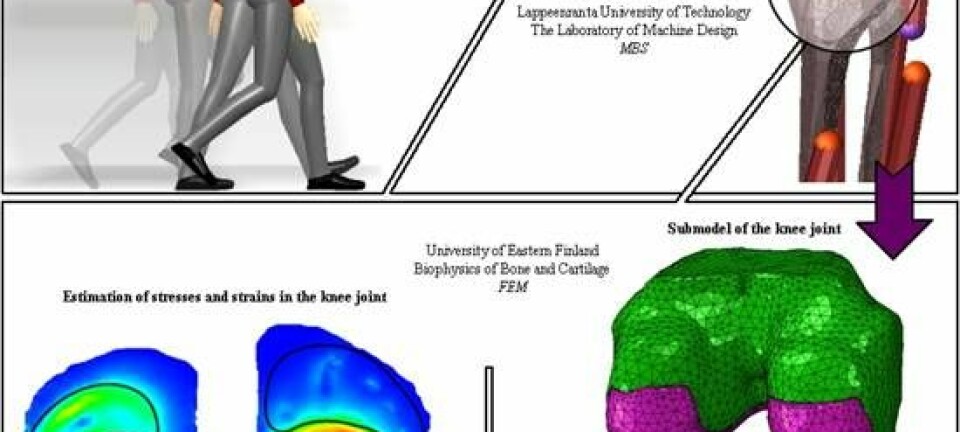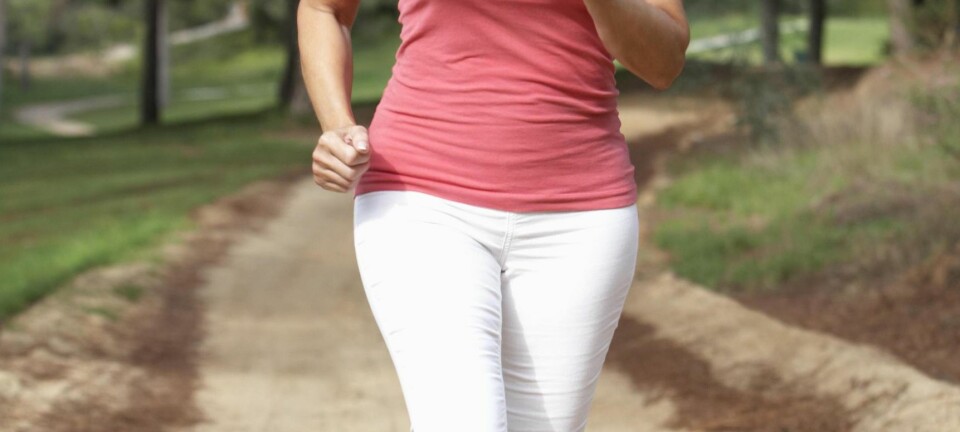An article from The Academy of Finland

Bone density project sheds new light on risks
Low bone density may significantly increase the risk of fracture in women as young as 50, new research reveals. Previous studies suggested that this only applied to older people.
Researchers from Finland are changing the way osteoporosis (‘porous bones’) and its life cycle is perceived.
The Osteoporosis Risk Factor and Prevention Study (OSTPRE) at the University of Eastern Finland has found that low bone density may significantly increase the risk of fracture in women as young as 50. Earlier studies suggested that this was only applicable to older people.
The latest evidence indicates that it makes sense to screen risk factors for fracture even in menopausal women.
According to Professor Heikki Kröger, who heads the project, the risk of fracture is increased not only by low bone density, but also by maternal hip fracture, low body weight, smoking, the use of cortisone tablets and having no children. However, the single most important risk factor is an earlier fracture.
Recommended preventive measures

The best means of prevention are sufficient physical exercise and a diet high in calcium and vitamin D. Three glasses of milk and a couple of pieces of cheese a day are enough to satisfy the daily calcium and vitamin D requirement. Hormone replacement therapy (HRT) has also been shown to significantly reduce fractures and bone loss.
“The human body makes highly efficient use of calcium and any excess is eliminated in the urine,” explains Kröger. "A shortage of calcium will result if consumption levels are very low, i.e. less than 400mg a day. As we again have seen in our study, there is a clear association between oestrogen therapy and calcium intake. It’s well established that low levels of calcium intake during HRT undermine the effectiveness of the therapy.”
He recommends that if you have the choice of taking calcium in pill form or in food, you should definitely go for food, since excessive calcium intake in supplements may be a risk factor for coronary heart disease, especially if you have other predisposing risks. Calcium from food is always safe. The minimum daily requirement is 800mg, he says.
Latest findings
According to the project’s latest doctoral thesis, the use of calcium and vitamin D supplements reduces recurrent falls.
For his research, MD Matti Kärkkäinen studied 3,000 women. One half of them received 1,000mg of calcium and 800 IUs (international units) of vitamin D over a period of three years. The other half made no dietary changes.
In the intervention group, whole body bone density was better. The women in this group reported fewer recurrent falls, and falls leading to hospitalisation, than the subjects who received neither calcium nor vitamin D supplements.
“We believe that vitamin D affects not only bones but also muscles, and in this way prevents people from falling so easily,” says Kärkkäinen. “However, the vitamin D dose was quite small. We are now planning to set up a research project where we’ll be using a larger, 40 or 80 microgram dose, aiming to determine its effect on bone and muscle health and on the appearance of fractures.”
The team is also planning to look into the effect of vitamin D on the incidence of cancer and cardiovascular diseases.
High prevalence underscores importance of research
Osteoporosis is very common in Finland, with an estimated 14 percent of the population suffering from osteoporotic bone density.
Each year, the condition is identified as the cause of some 30,000-40,000 fractures, most typically fractures of the wrist, hip and vertebrae. The most serious of these injuries are hip fractures, which number some 7,500 a year.
Hip fractures are also the most expensive fractures to treat. If the patient can be treated at home and recovers well, annual treatment costs come to around €14,000, but if the patient requires institutional treatment the figure can be as high as €36,000.
“In terms of the effectiveness and cost efficiency of medical interventions, older patients benefit most from treatment,” says Kröger. “Many pharmaceutical studies of patients with a mean age of 70-75 years have shown that drug therapies can help prevent ankle fractures, in some cases there is even evidence of a preventive effect against hip fractures.”
Vulnerable groups
Osteoporosis typically affects women of slight build. When oestrogen production declines at menopause, fat tissue gains a more prominent role in hormone production. Anorexia in young women also increases exposure to bone loss.
Genetics also has a role to play in osteoporosis, but identifying and clarifying that role is just as difficult as in other complex multigenic diseases. What is known from experience is that smaller bones are mechanically weaker than bigger bones.
Osteoporosis can develop insidiously. Fractures of vertebrae can develop in osteoporotic bone even without trauma, on bending over or carrying a shopping bag, and they can disable the patient for the rest of their life. A vertebral fracture reduces the patient’s height.
Kröger explains that the older people get, the greater the role of osteoporosis in the development of bone fractures.
“Obviously, there is no point in starting bone density screenings in people aged 50 because osteoporosis is still rare in this age group. However, the risk that women aged 50 will suffer some osteoporotic fracture during the remainder of their life is as high as 40 percent. If bone density is measured in a patient due to a high occurrence of risk factors and the results show, say, a 10 percent reduction compared to normal, then the patient’s risk of suffering a fracture over the next 2-3 years is increased by 50 percent.”
A recent publication from the OSTPRE study found that women who took regular physical exercise had better hip bone density than non-exercising women, but surprisingly they had more follow-up wrist fractures.
“The more you move, the more you are exposed to falls – especially during the winter months. However, based on this research we’re not going to recommend that people take as little exercise as possible,” Kröger says with a wry smile.





